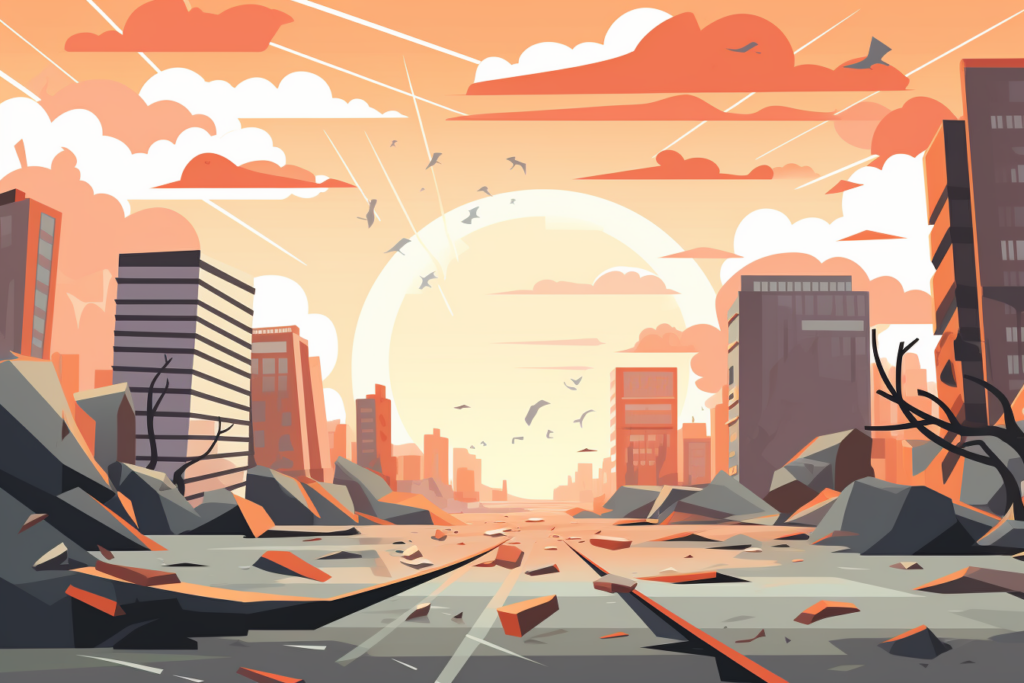Natural disasters, such as hurricanes, earthquakes, floods, wildfires, and tornadoes, can strike unexpectedly, causing significant damage to homes and threatening the safety of those inside. Preparing your home for these emergencies is not just a good idea; it’s a necessity. In this blog post, we’ll explore essential steps to help you protect your home and loved ones when faced with the unpredictability of Mother Nature.
Understanding Your Local Risks
The first step in preparing your home for natural disasters is understanding the specific risks in your region. Different areas are prone to various disasters, such as hurricanes in coastal regions, earthquakes near fault lines, and wildfires in dry, wooded areas. Research local hazards and consult with local emergency management authorities to assess your risks.
Creating a Family Emergency Plan
Before you tackle any physical preparations, start by developing an in-depth emergency plan for you and your family.
This should include:
- An evacuation plan with designated meeting places.
- A list of important contacts.
- A communication strategy, cell networks may be unreliable during disasters.
Practice this plan regularly to ensure everyone knows what to do during a crisis. Know your evacuation routes and destinations in advance. Keep your vehicle in good condition, and maintain a full gas tank during peak disaster seasons. Familiarize yourself with local emergency shelters and their policies.
Assembling a Disaster Supply Kit
Prepare a well-stocked disaster supply kit with essential items like non-perishable food, water, first-aid supplies, flashlights, batteries, blankets, and personal hygiene items. Make sure your kit is easily accessible (and you know exactly where it is) and regularly updated.
Reinforcing Your Home’s Structure
Depending on your local risks, consider reinforcing your home’s structure. Install hurricane shutters, earthquake-resistant fasteners, and wildfire-resistant roofing materials—secure heavy furniture and appliances to prevent them from toppling during disasters.
Here are a few other ways to help your home structure:
- Consult with a structural engineer to evaluate your home’s resilience against specific natural disasters common in your area.
- Reinforce the foundation, secure the roof, and retrofit your home as needed.
- Install impact-resistant doors and windows to protect against high winds and flying debris.
- Anchor heavy furniture to prevent them from toppling over during earthquakes or floods.
Securing Utilities and Infrastructure

Learn how to turn off your home’s gas, electricity, and water supplies. Install automatic gas shutoff valves and secure water heaters to reduce fire and flood risks. Ensure utility companies provide clear instructions on shutting off services safely.
Protecting Valuables and Important Documents
Store important documents (birth certificates, passports, insurance policies, and wills) in a waterproof and fireproof container. Create digital backups of essential records and store them securely in the cloud or external drives.
Invest in Insurance
Depending on where you live, different insurance options should be considered. Check your current policy and:
- Ensure you have adequate homeowners’ insurance, including coverage for natural disasters relevant to your region.
- Document your belongings and keep a detailed inventory for insurance claims.
Staying Informed and Communication
Invest in a battery-operated NOAA weather radio and subscribe to emergency alerts and notifications. Establish a communication plan with family members and designate an out-of-town contact person. Ensure everyone has charged mobile phones and portable chargers. A few other ways to prepare are:
- Get involved in your community’s disaster preparedness efforts, such as neighborhood watch programs and emergency response teams.
- Share information and resources with neighbors to build a stronger support network.
Caring for Vulnerable Family Members
Consider the needs of vulnerable family members, such as children, the elderly, or individuals with disabilities, when creating your emergency plan. Ensure you have the necessary supplies and medication for their specific requirements. Natural disasters are known for impacting your health; anything you can do to plan ahead will benefit your entire family if you are stuck in an unfortunate situation.
Practicing Drills and Emergency Scenarios
Regularly conduct emergency drills with your family, including fire, earthquake, and evacuation exercises. Practicing these scenarios helps everyone remain calm and confident in case of a real emergency.
Area Specific Precautions
Depending on where you live, you can take a few climate/region-specific preventative measures. Here are some areas of consideration to prepare before a natural disaster.
Flood Protection
- Elevate electrical systems, heating, ventilation, and air conditioning (HVAC) units to prevent flood damage.
- Install backflow valves in sewage systems to prevent sewer backups during floods.
- Consider waterproofing your basement or crawl space.
Wildfire Preparedness
- Create defensible space by clearing flammable vegetation and debris from around your home.
- Use fire-resistant building materials when constructing or renovating your home.
- Regularly clean your roof and gutters to prevent ember entry.
Hurricane and Tornado Readiness
- Install hurricane straps to reinforce your roof.
- Have a safe room or storm shelter built or designated within your home.
- Trim trees near your home and reduce the risk of falling branches during high winds.
Earthquake Safety
- Secure heavy items, such as bookshelves and water heaters, with straps or brackets.
- Consider earthquake-resistant shelving and furniture.
- Know how to “Drop, Cover, and Hold On” during an earthquake.
Post-Disaster Recovery
After a natural disaster, prioritize safety and recovery efforts. Check for injuries and administer first aid as needed. Assess your home for structural damage and secure it before re-entry. Document damage for insurance claims and contact your insurance company promptly. Be patient during recovery, as rebuilding and restoring normalcy may take time.
Conclusion
While we can’t control natural disasters, we can control our level of preparedness. Taking these steps to prepare your home for natural disasters can make a major impact in minimizing damage and ensuring your family’s safety. Staying prepared is an ongoing process, and staying vigilant and informed is key to protecting your home and loved ones when disaster strikes.
You might also be interested in: 13 Ways To Prep Your Home For Winter




